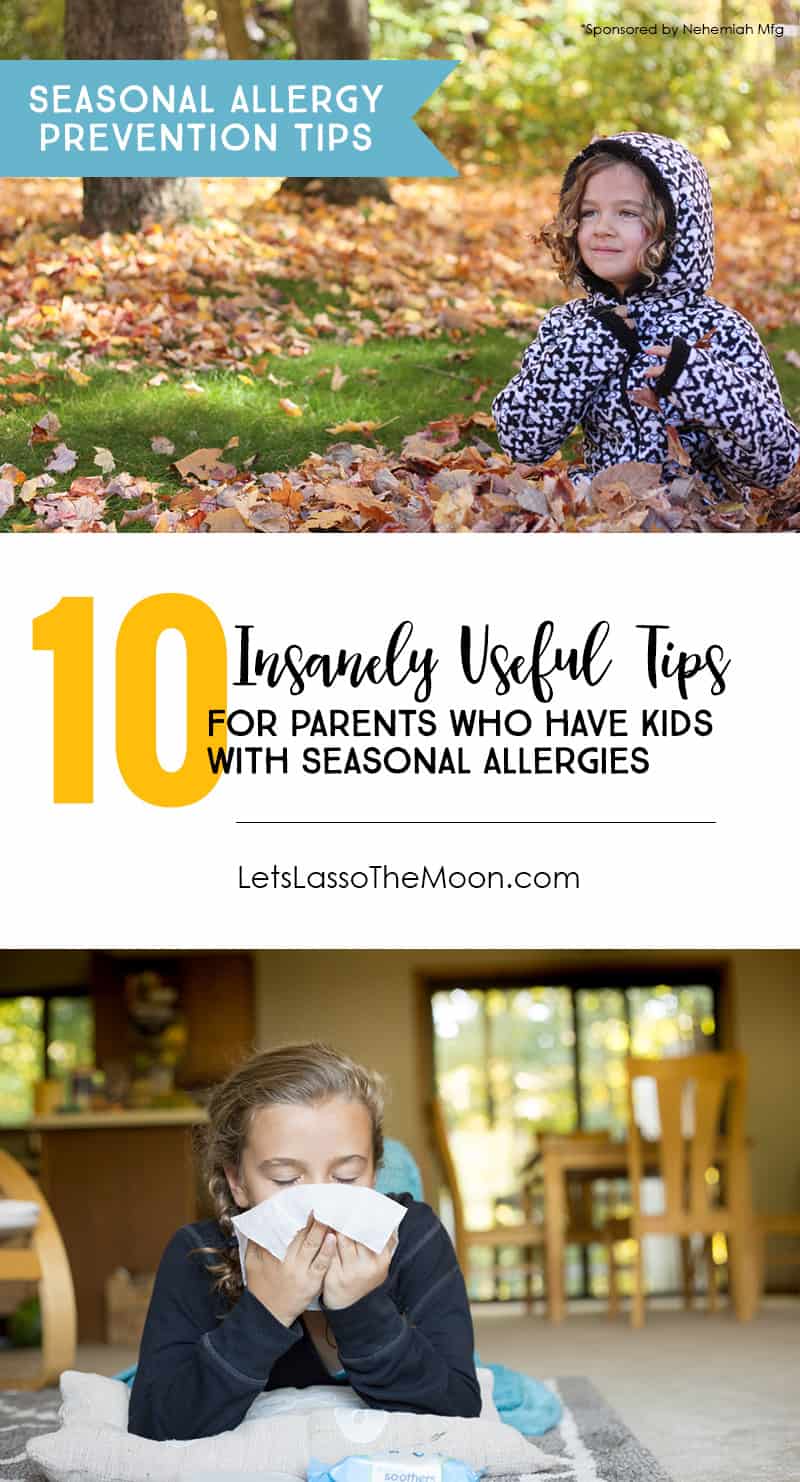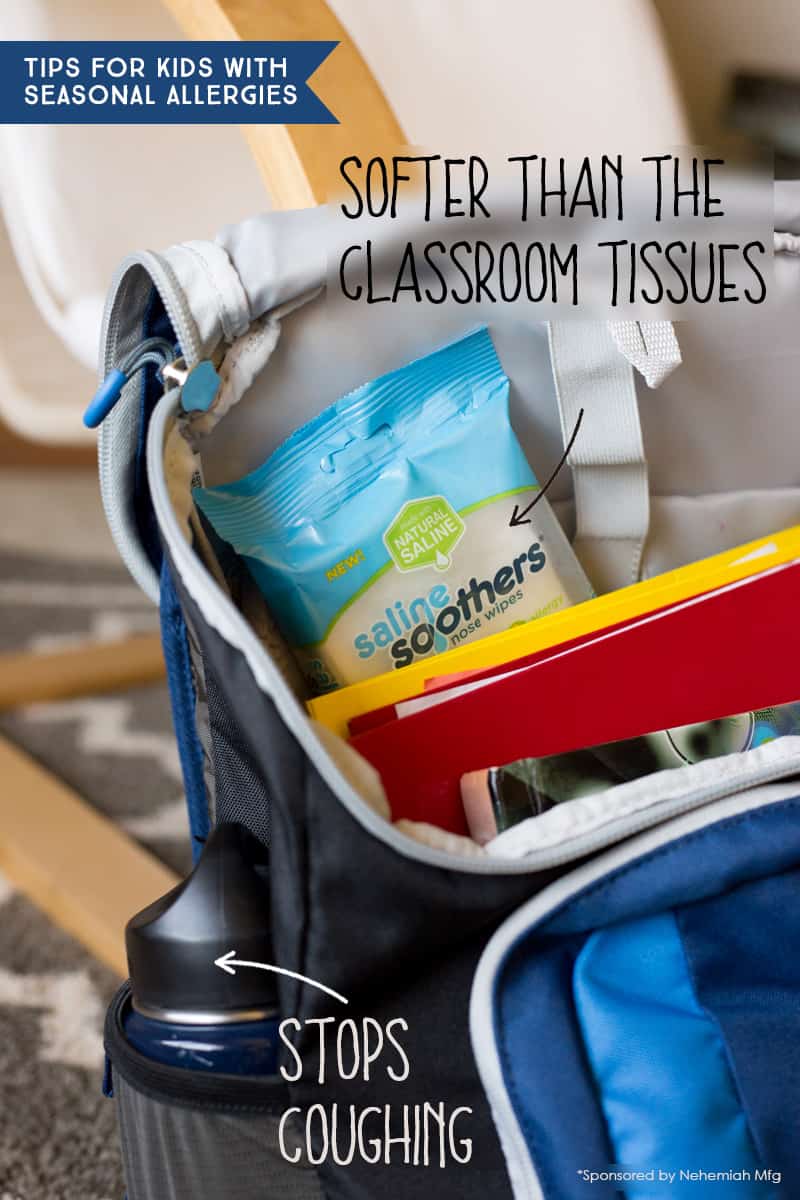Kids with seasonal allergies can really have a hard time in autumn. Below you'll find ten insanely useful tips to help your family. A big thanks to Saline Soothers for sponsoring today's conversation.
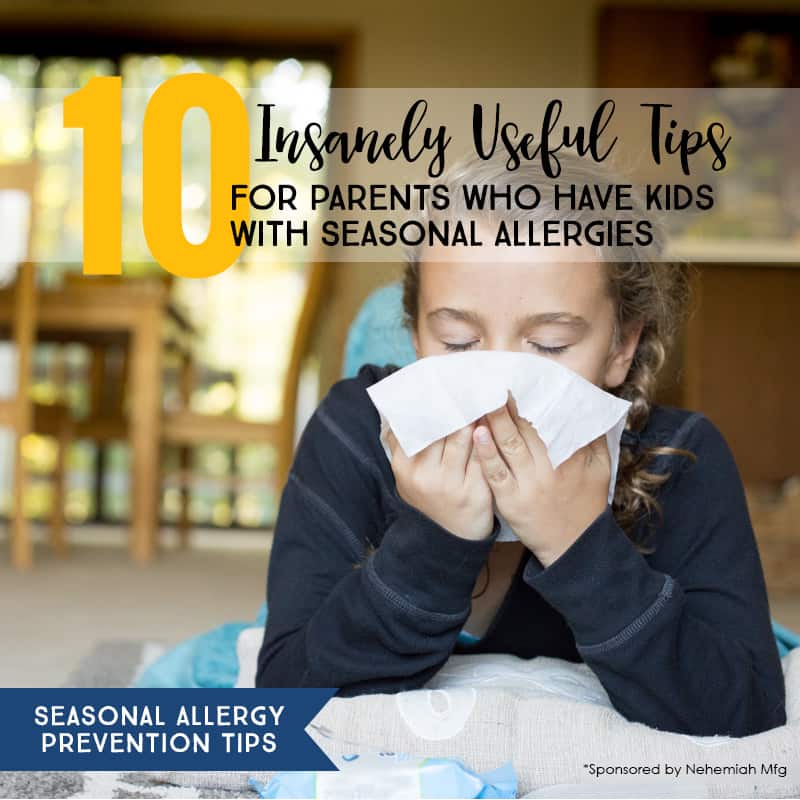
Itchy, watery eyes.
Sniffling and sneezing.
Wheezing and coughing.
Seasonal allergies might be the culprit if you notice these symptoms this time of year.
Ragweed is the villain of the hour—a single plant can produce one billion pollen grains during the fall season. Can you tell which of the plants below is ragweed?
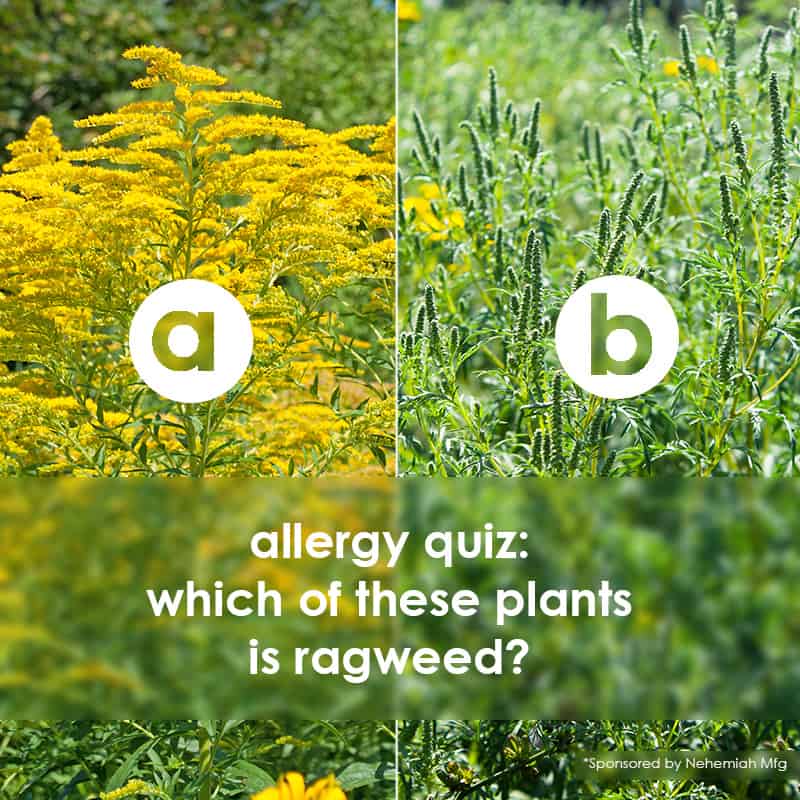
The plant on the left (a) is goldenrod, which is often mistaken for ragweed, shown on the right (b). Both plants are active at the same time of year, so chances are if you see the dark yellow flowers of goldenrod, ragweed is in bloom, too.
If the ragweed pollen doesn't get you, then fall molds probably will. They grow on wet leaves and decomposing plants this time of year.
The fall allergy season generally revolves around these two primary allergens. It begins mid-August, peaks mid-September, and can last through October (depending on when the first hard frost of the season hits).
Eighty percent of people with seasonal allergies complain about symptoms [like sneezing, runny nose, or itchy, watering eyes] as well as problems with sleeping, being tired, having poor concentration, and decreased productivity at school or work. [Source]
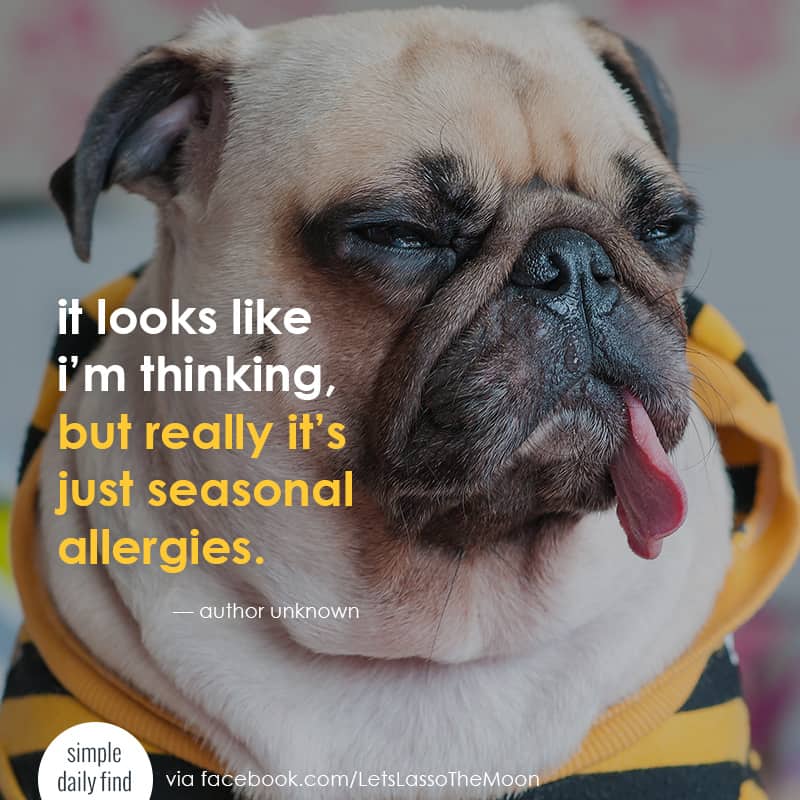
Don't let seasonal allergies get you or your kids down this fall.
I've been doing immunotherapy (AKA: allergy shots) for the last three years, and I have two kids with seasonal allergies. Needless to say, our family has learned a lot of random (and insanely helpful!) tips over the years. I'm excited to share them with you below, in the hopes they reduce the effects of seasonal allergies on your family this fall.
10 Tips for Parents Who Have Kids with Seasonal Allergies
Here are ten proactive ways to help kids with seasonal allergies get more out of fall with fewer allergy symptoms...
1. Close the windows and keep your air conditioning running.

I know there's something about a crisp fall breeze that makes you want to open up and enjoy the fresh air. BUT— Imagine all the different types and concentrations of pollen that are floating around outside right now. If you open your car windows, you are basically creating a pollen dance party in your vehicle.
Don’t blast your kiddo with allergens... Instead, use that handy "recirculation mode" button in your car. It's the one with arrows going in a circle, indicating that it will recirculate the existing air in your car vs. pulling fresh air in from outside to cool your car.
Studies show that you can cut the amount of pollen your kiddo breathes in by as much as 30% when using the air conditioner in the car. [Source: Nyngoc Nguyen, MD, chief of allergy at Kaiser Permanente Medical Center, Northern California, via Health.com]
The same concept is true for your home. If your house or apartment uses forced air for heating and cooling, it's important to proactively keep a large amount of pollen out of the air cycle. It seems ridiculous to be running an air conditioner when the temps are in the 70s, but your kids' sinuses will thank you. Set the A/C to have the air in your home "recirculate." (There's that term again!) If it’s cool outside, use the filter-only fan mode on your thermostat.
2. Prevent social disaster at school.
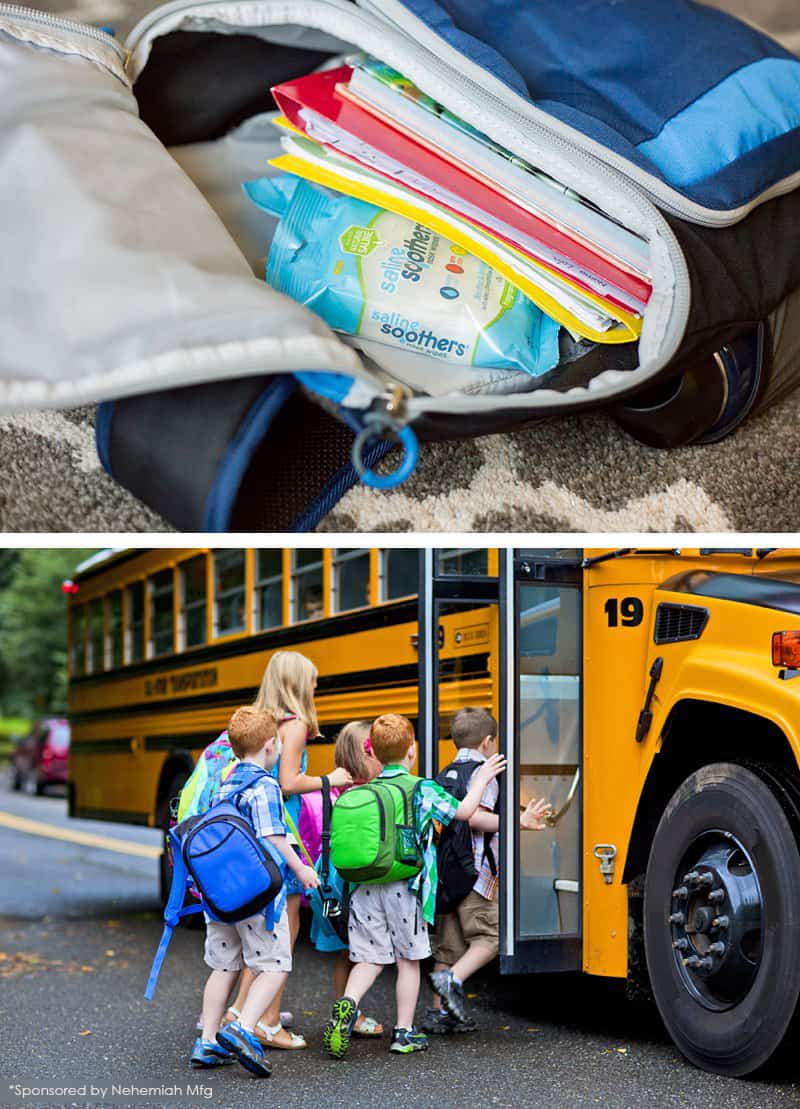
The back-to-school season can bring on allergy symptoms in kids because mold and dust mites are common in schools. Send your children prepared to tactfully handle a stuffy nose and a cough from an irritated throat.
Check your school's policy or get special permission for your kiddo to bring a water bottle to school. This will allow him or her to avoid disrupting class with coughing or constantly asking to be excused to use the water fountain (or as we say here in Wisconsin: the "bubbler"). I'd also recommend throwing Saline Soothers into their backpack to keep that runny nose at bay.
Why saline nose wipes instead of traditional tissues?
Here's the 411:
Saline is a natural way to provide relief to noses irritated by colds and allergies. When infused into a moist wipe like Saline Soothers, saline makes mucus easier to wipe away while remaining gentle enough to comfort stuffy noses. Because saline is natural and hypoallergenic, it can soothe even the most delicate skin.
Doctors regularly recommend the use of saline (via nasal drops for infants and children, and sprays and neti pots for teens and adults) when there is a need to clean and clear the nasal cavity. Saline is sodium chloride and water. Sodium chloride is a mineral found naturally occurring in the earth and body that excels at breaking up and thinning mucus when used in the right concentration. Saline Soothers products are made with 0.9% isotonic saline. Patented Saline Soothers are uniquely formulated with just the right amount of saline to soothe and moisturize your nose and face without irritation.
What I particularly like about Saline Soothers is that they have natural ingredients like saline, Vitamin E, aloe, and chamomile to soothe and moisturize tender little noses. It's also important to me that they do *not* contain parabens, sulfates, choline, or phthalates.
But if you'd ask my daughter why she uses Saline Soothers, her reply would simply be, "Because they feel better." During the allergy season, my daughter has made a habit of just keeping a pack on hand, no matter what the activity.
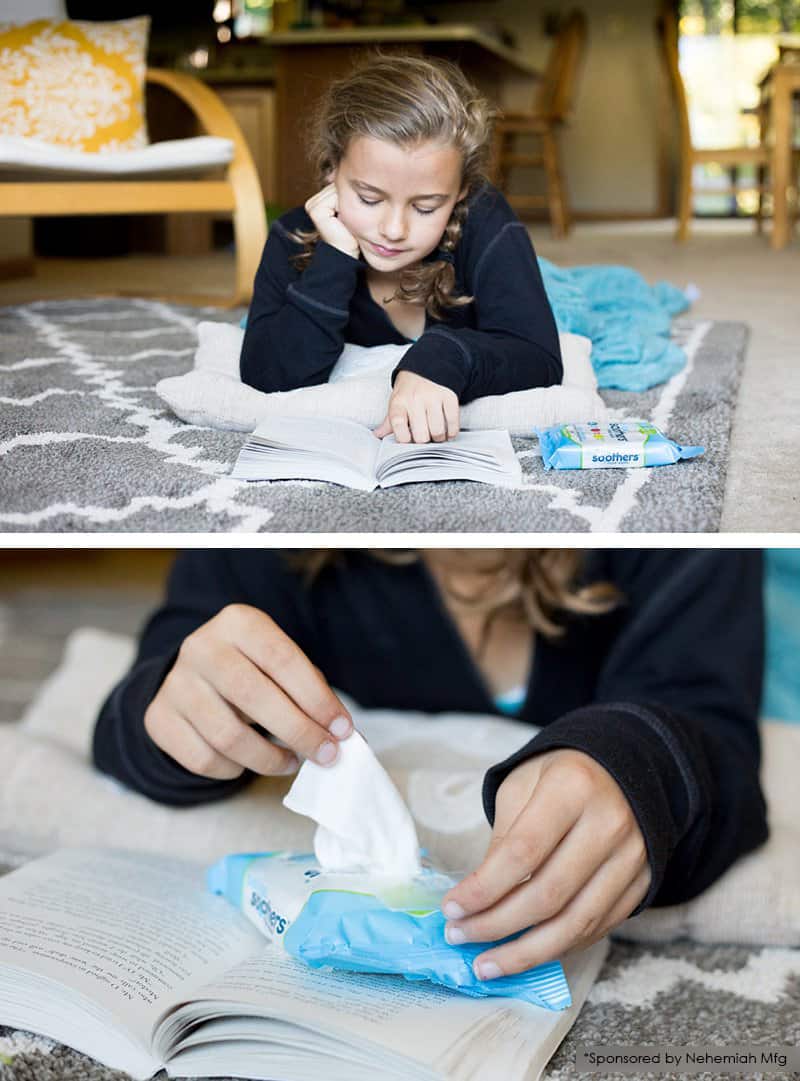
Heads-up: If you shop at Walgreens and want to try Saline Soothers, be sure to grab this coupon from SalineSoothers.com. You can find Saline Soothers at Rite Aid or on Amazon, too.
3. Use your smartphone to keep an eye on pollen counts.
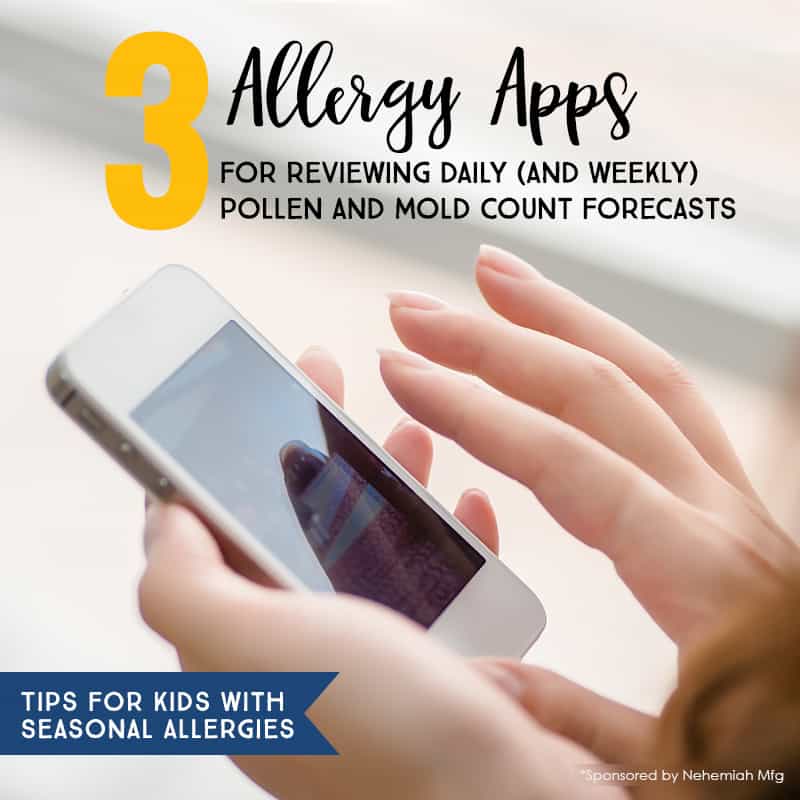
Review daily (and weekly) forecasts for pollen and mold counts before making plans outside. There are a variety of apps available to provide you this information at the push of a button on your smartphone. Here are some prominent ones:
- Pollen.com's Allergy Alert (Android, iOS) app
- WebMD Allergy (Android, iOS) app
- WeatherChannel.com (Android, iOS) app
In general, you'll start to notice that slightly damp days will become the best time for your kiddo to get in some outside time. If it's going to be a sunny, warm, windy, dry day... the ragweed's going to be high.
4. Avoid leaf piles at all costs.
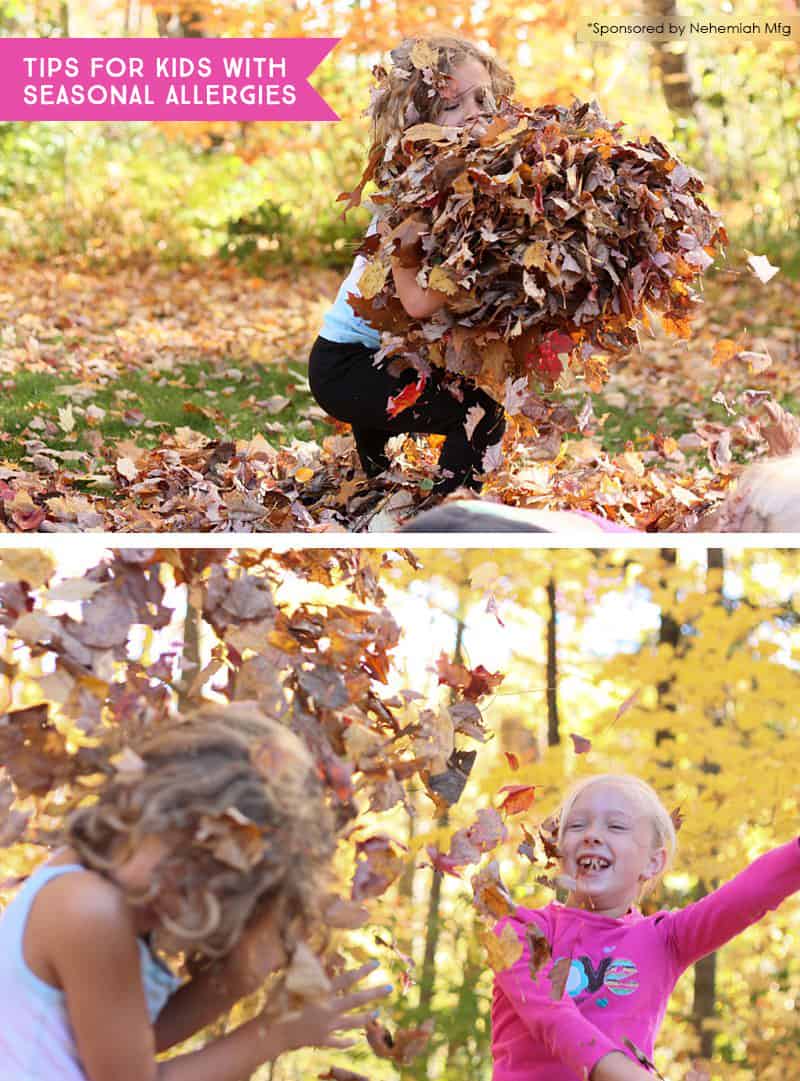
Piles of fresh, dry leaves are full of allergens, and damp leaves are ideal breeding grounds for mold. Redirect any allergy-prone kids at all costs (or let them know they can play in them, but they might "pay the price" with heightened allergy symptoms later). As fun as leaf piles look, they're an allergy nightmare.
5. Say "au revoir" to stuffed animals.
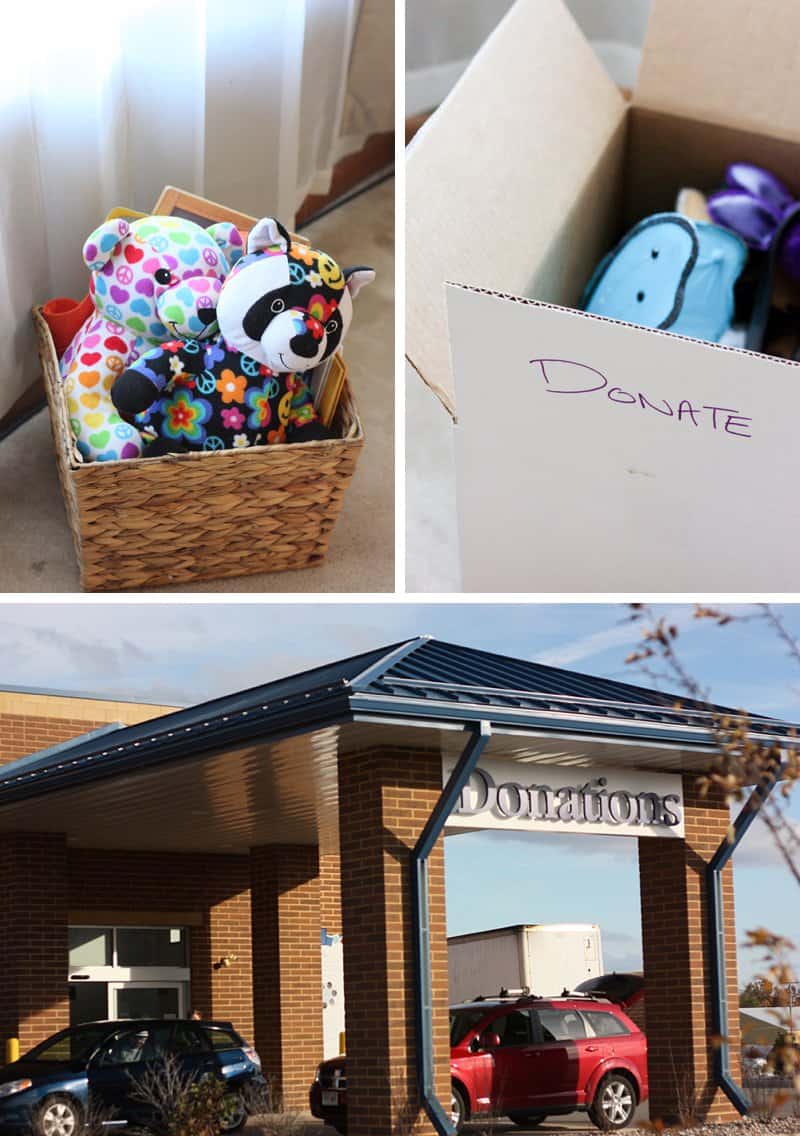
Stuffed animals are an unexpected allergy culprit. As a rule of thumb, keep stuffed animals off the bed. If your kiddo has a special stuffy, make a habit of washing it at least once a month in hot water followed by a 20-minute maximum-heat dryer cycle.
That being said, fall is the perfect time of year to get your kids to WILLINGLY donate some of their toys. It's much easier than you'd imagine. Stuffed animals are a great place for children to begin when thinning out their toys. Here are five other helpful tips for getting started. Another way to keep the clutter and allergens of kids' rooms in check is to start a toy rotation. This gives you time seasonally to clean toys while fresh-from-storage toys are cycled in. Old forgotten toys become new favorites all over again.
6. Realize kids will be kids.
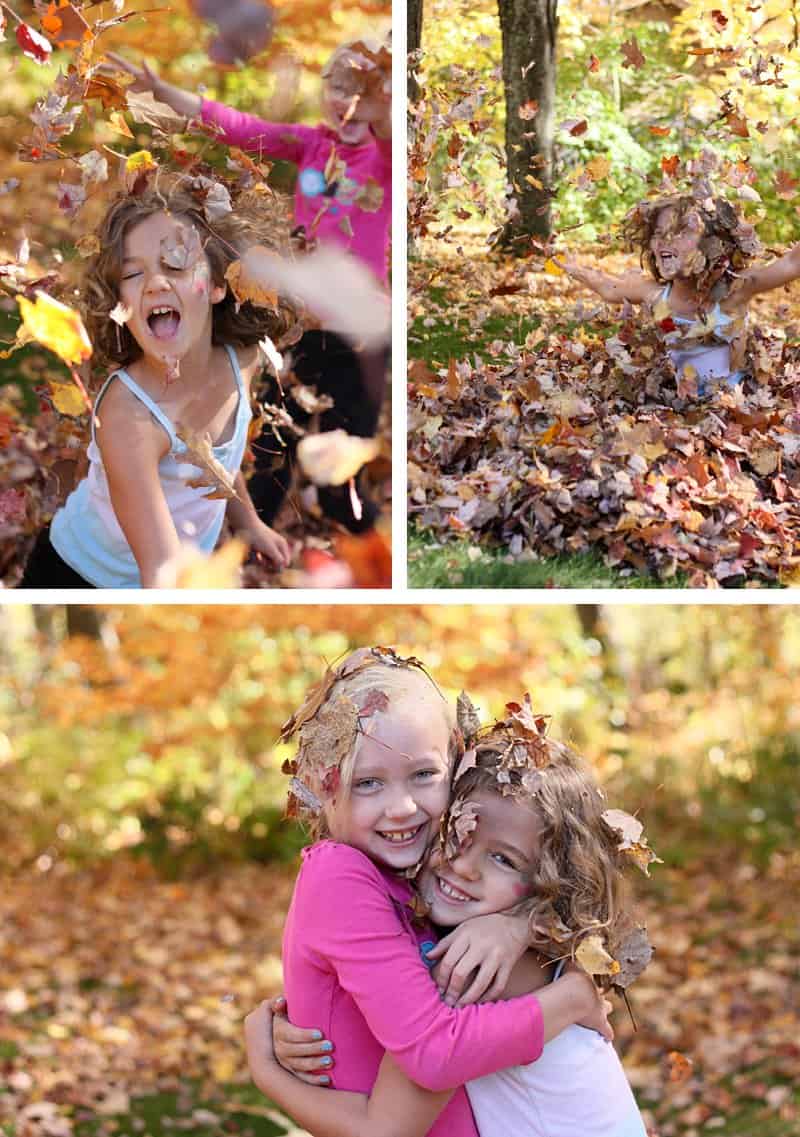
Yeah, I know I said avoid leaf piles at all costs... but look at those smiles. Life happens.
If your son has been having the time of his life jumping around in a leaf pile, there are still proactive measures you can take to reduce long-term effects. Once the fun is over, use a kid-friendly, non-medicated sterile saline mist to help flush those allergens out of his sinus cavity. And be sure he showers right away to help stop all the pollen on him from coming into the house or in his bed where he's sleeping at night.
7. Keep pillows and bedding fresh.
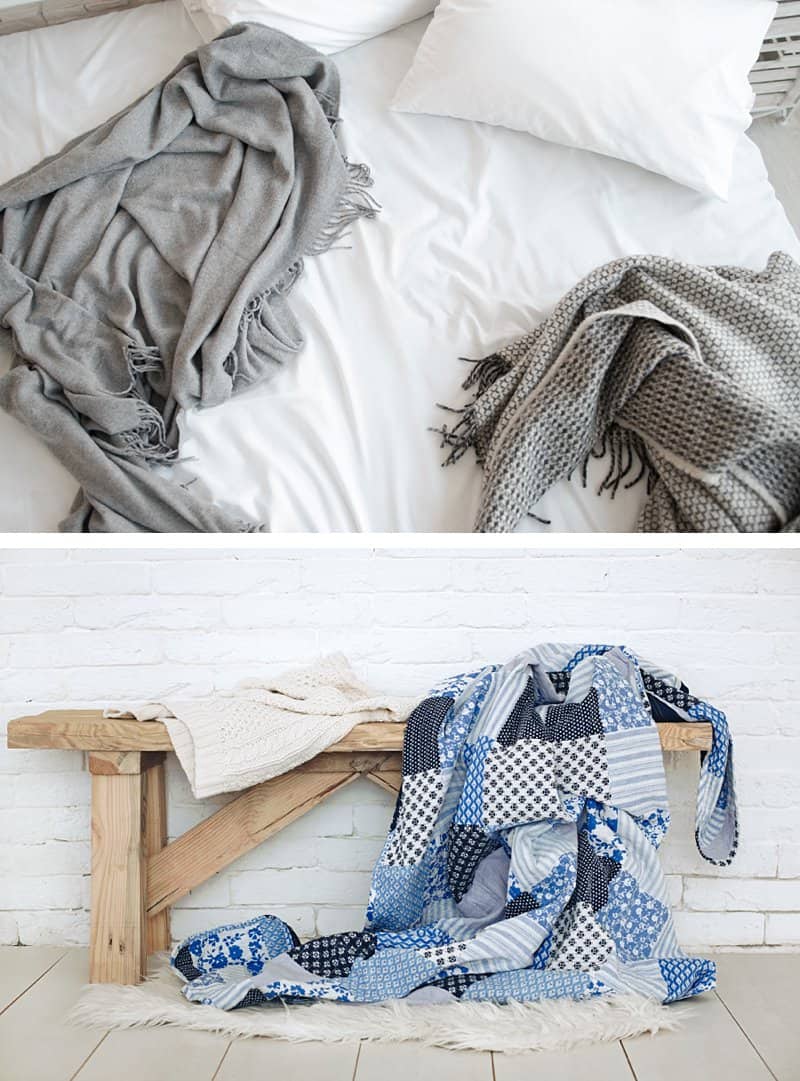
Dust mites can trigger sneezes, wheezes, and runny noses. Wash bedding once a week in hot water. Give kids the task of vacuuming their mattress while you wash the sheets to get rid of dust mite residue. Or, if you've got an older tween or teen—get them doing this weekly chore. Here are a few helpful tips for empowering tweens to do their own laundry. My kids do their own laundry—Yours can, too.
You can also keep dust mites at bay by buying a new pillow for your kiddo at the start of the fall and spring allergy season. Another alternative is to use pillow and bed protectors that use layers of micropourous fabric to effectively block dust mite allergens.
8. Stop mold and dust mites with a dehumidifier.
You can help prevent mold and dust mites by keeping your home's overall humidity under control. Both mold and dust mites reproduce rapidly in warm, humid environments. They are among the most common indoor allergy and asthma triggers. Use your dehumidifier to maintain a humidity level between 35 and 50% in your home to reduce these issues.
9. Do this BEFORE you turn the heat on for the season...
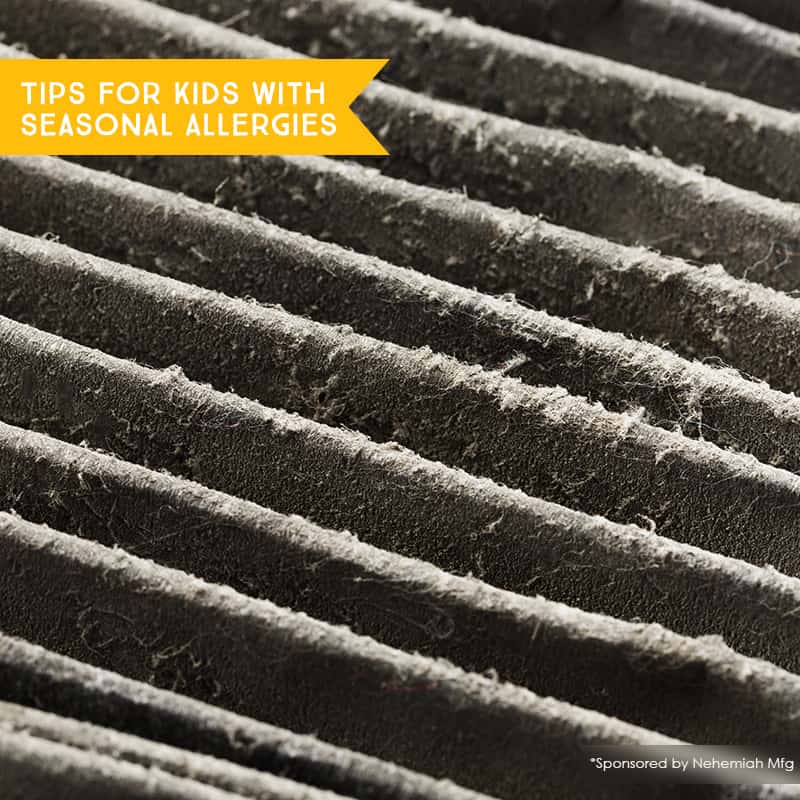
Before you turn on the furnace for the first time, be sure to clean your heating vents and change the air filter. If you haven't been 100% diligent about keeping the windows in your home closed, allergens can get trapped inside the vents. You want to ensure you remove them so they don't fill the air when you turn on the heat. If your furnace is equipped to do so, use a HEPA filter to remove any pollen, mold, and other particles from the air. They're a bit pricier, but worth the investment.
10. Mark your calendar NOW.

If you feel your child might be dealing with seasonal allergies, I want you to add two things to your family calendar:
- I highly recommend you schedule an appointment over the winter with a certified allergist to have a scratch test performed to see which specific allergens bother your child the most. Then you can be very specific about your course of action.
- Write yourself an allergy reminder for early August of next summer. If you're proactive about the allergy season, your kiddo will do much better than if you wait until he or she is symptomatic. If needed, talk to your allergist about being strategic with medications based on your child's reaction and when certain pollens started to be identified on pollen counters this year.
Here's the truth... Once my child is showcasing strong allergy symptoms, it can feel almost impossible to reduce them (even with prescribed antihistamines). I simply look for ways to keep my kids happy while they deal with them (like using Saline Soothers, for example).
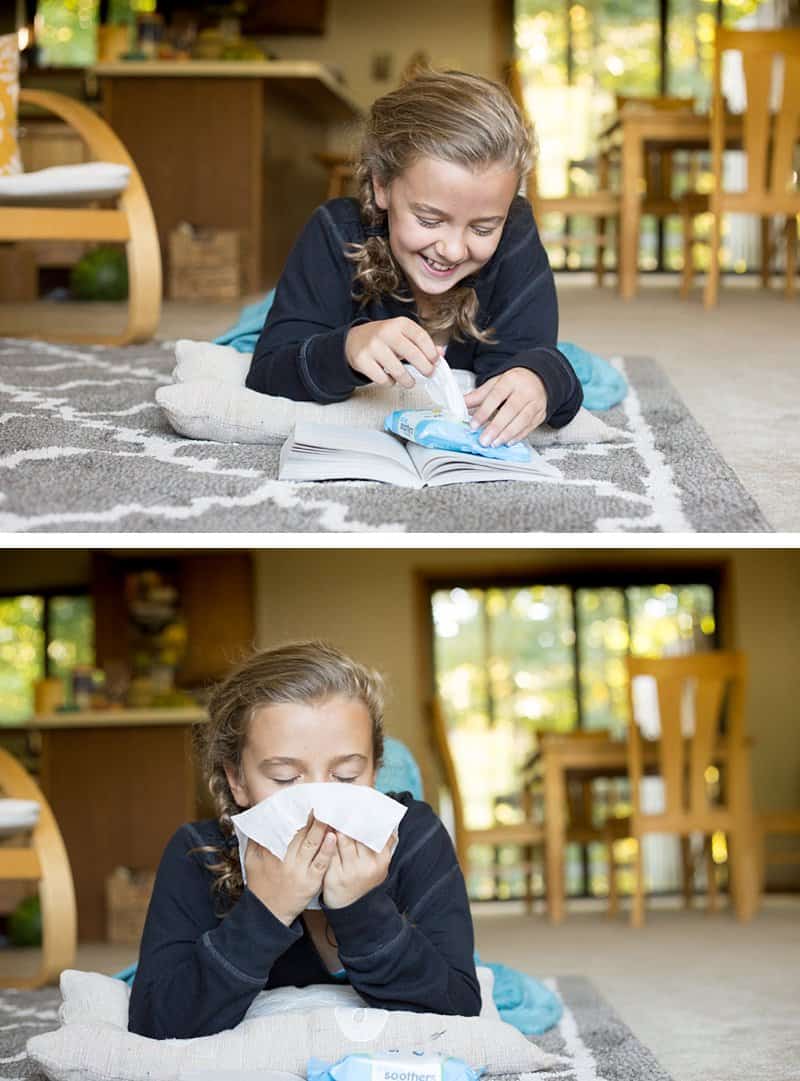
We've been dealing with pretty severe seasonal allergies for the last five years. There's definitely a learning curve.
I'd love to hear what works with your family. Let's chat in the comments... Tell me about your kids and how you've helped reduce their allergy symptoms.
Wishing your family more symptom-free fall days ahead,

P.S. Again, a big thanks to Saline Soothers for sponsoring this conversation about seasonal allergies. Right now, my daughter has a cold on top of her allergies, so we're doubly thankful to have these on hand. Learn more about Salines Soothers online here: Website | Facebook | Twitter | Instagram
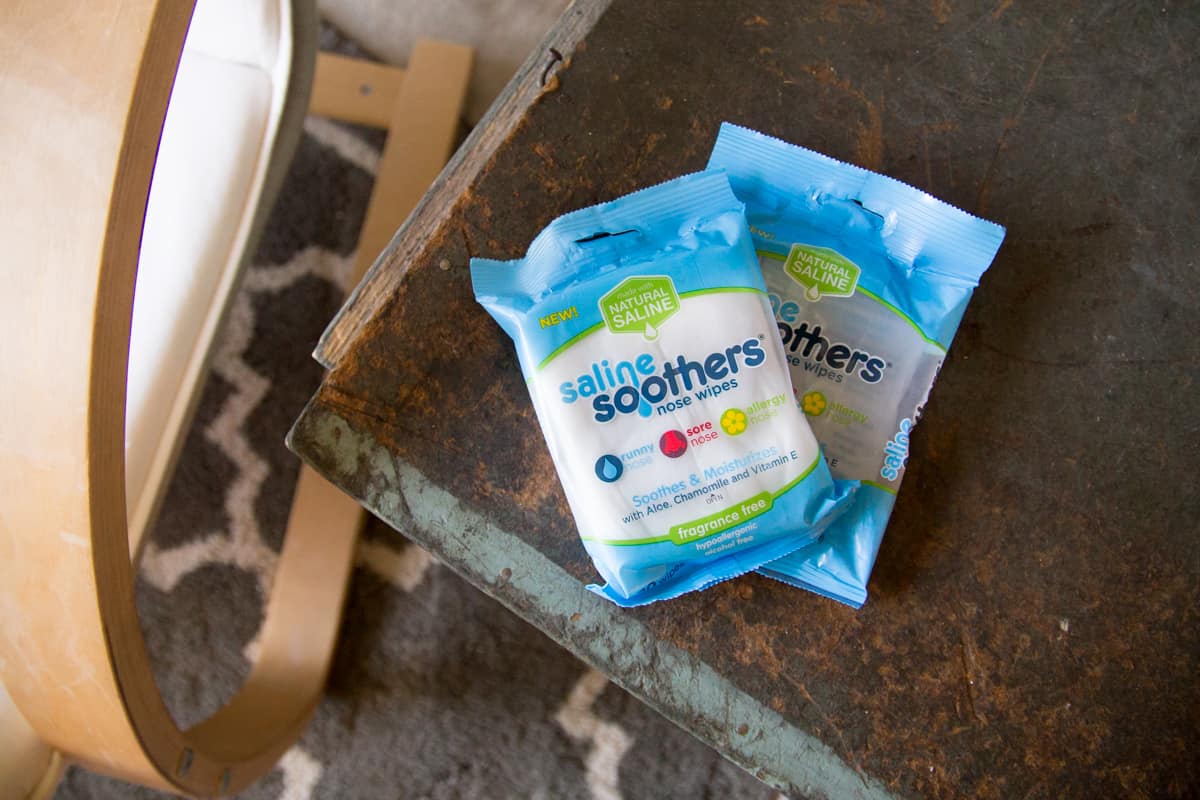
Click here to try Saline Soothers and get a $1 OFF coupon to use at Walgreens: GET COUPON
 |
 |
 |
 |
 |
|
 |
|||||
Disclosure of Material Connection: This is a “sponsored post.” The company who sponsored it, Nehemiah Manufacturing, compensated me via a cash payment, gift, or something else of value to write it. Regardless, I only recommend products or services I use personally and believe will be good for my readers. I am disclosing this in accordance with the Federal Trade Commission’s 16 CFR, Part 255: “Guides Concerning the Use of Endorsements and Testimonials in Advertising.”
Pin it for later:
